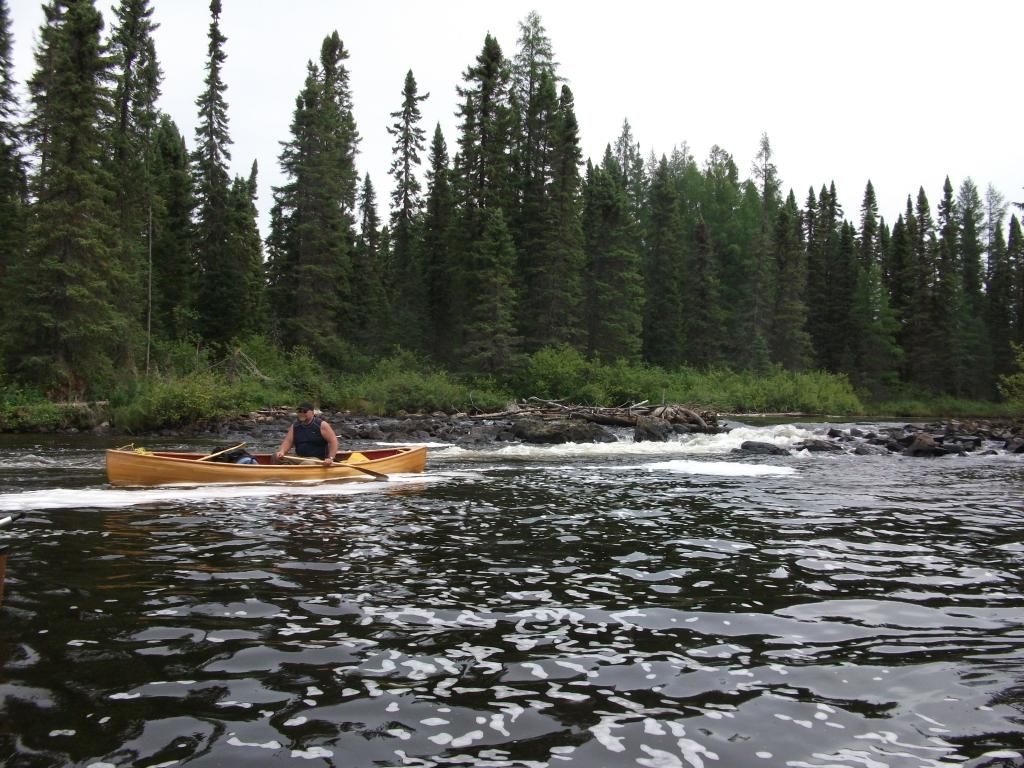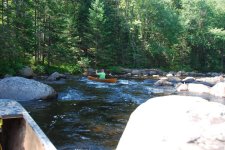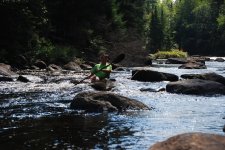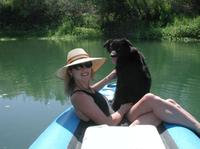I've got a big trip in mind for this coming summer. It might happen and it might not, but hopefully it will. Step one will be designing and building a canoe for the task at hand. The task would be canoeing the length of the Bloodvein River in Ontario and Manitoba. And when I reach the end turning around and paddling back the way I came. It's 185 miles each way. I figure it would take about a month, which would be the biggest obstacle to making it happen.
Sounds like I can expect a lot of class I and II rapids with a fair number of portages around anything bigger than a relatively straight forward class II. Large capacity will be needed to carry that much gear and food while running some rapids but I'd like some nimbleness for getting through rapids and I'll need speed and efficiency for turning around and coming back upstream, plus a lot of lake travel as I cross WCPP. I plan on outfitting it with a rudder, mainly for upstream travel.
I was hoping to get by with a 16' hull but after playing around a little with the design the other night it looks like I'll probably need to go longer to get the necessary capacity and buoyancy. I'm thinking I'd tip the scales at around 350 pounds; 50lb. boat, 30lb. dog, 165lb. me, and 100lbs. of gear and food.
I know a lot of you out there have a lot more experience in rivers and adventures like this so I'd welcome any input on similar travels you've taken and any boat designs you think might be suited to the task.
Alan
Sounds like I can expect a lot of class I and II rapids with a fair number of portages around anything bigger than a relatively straight forward class II. Large capacity will be needed to carry that much gear and food while running some rapids but I'd like some nimbleness for getting through rapids and I'll need speed and efficiency for turning around and coming back upstream, plus a lot of lake travel as I cross WCPP. I plan on outfitting it with a rudder, mainly for upstream travel.
I was hoping to get by with a 16' hull but after playing around a little with the design the other night it looks like I'll probably need to go longer to get the necessary capacity and buoyancy. I'm thinking I'd tip the scales at around 350 pounds; 50lb. boat, 30lb. dog, 165lb. me, and 100lbs. of gear and food.
I know a lot of you out there have a lot more experience in rivers and adventures like this so I'd welcome any input on similar travels you've taken and any boat designs you think might be suited to the task.
Alan






